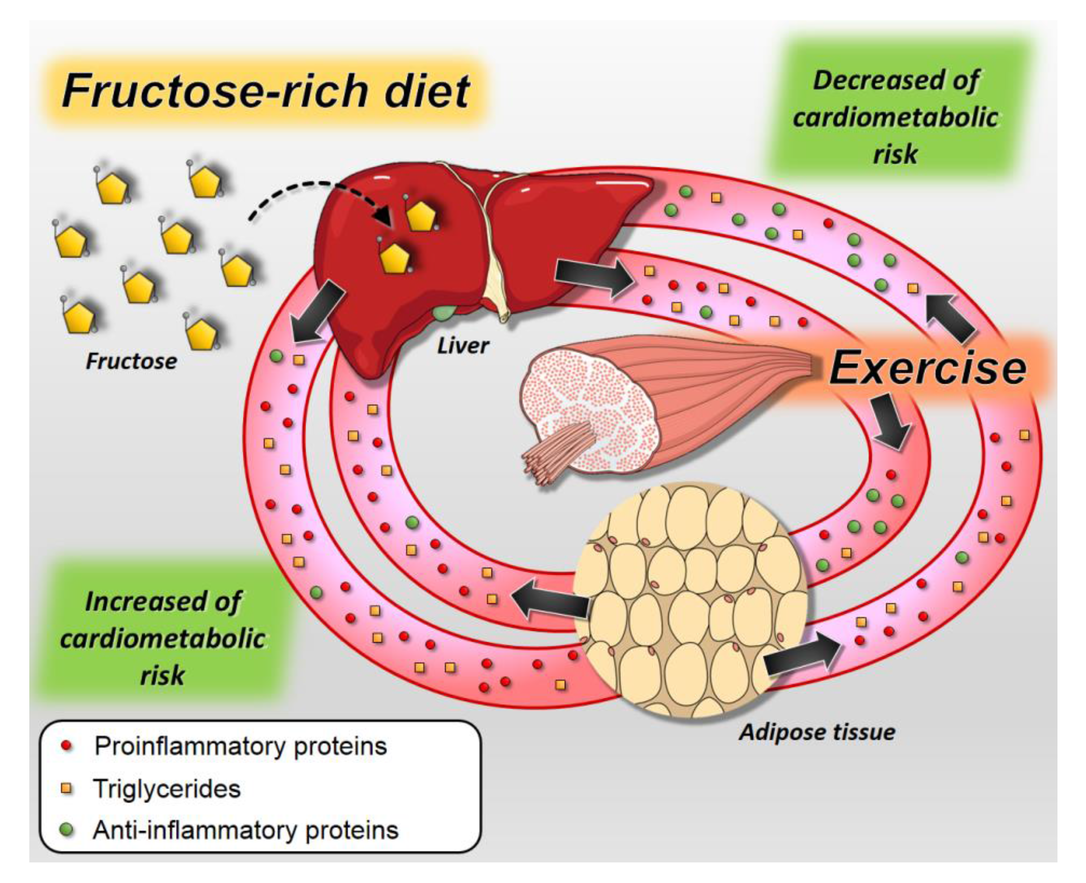Fructose consumption has been growing exponentially and, concomitant with this, the increase in the incidence of obesity and associated complications has followed the same behavior. Studies indicate that fructose may be a carbohydrate with greater obesogenic potential than other sugars. In this context, the liver seems to be a key organ for understanding the deleterious health effects promoted by fructose consumption. Fructose promotes complications in glucose metabolism, accumulation of triacylglycerol in the hepatocytes and alterations in the lipid profile, which, associated with an inflammatory response and alterations in the redox state, will imply a systemic picture of insulin resistance. However, physical exercise has been indicated for the treatment of several chronic diseases. In this review, we show how each exercise protocol (aerobic, strength or a combination of both) promote improvements in the obesogenic state created by fructose consumption as an improvement in the serum and liver lipid profile (HDL increase and decrease TG and LDL levels) and a reduction of markers of inflammation caused by an excess of fructose. Therefore, it is concluded that the practice of aerobic physical exercise, strength or a combination of both is essential for attenuating the complications developed by the consumption of fructose.

